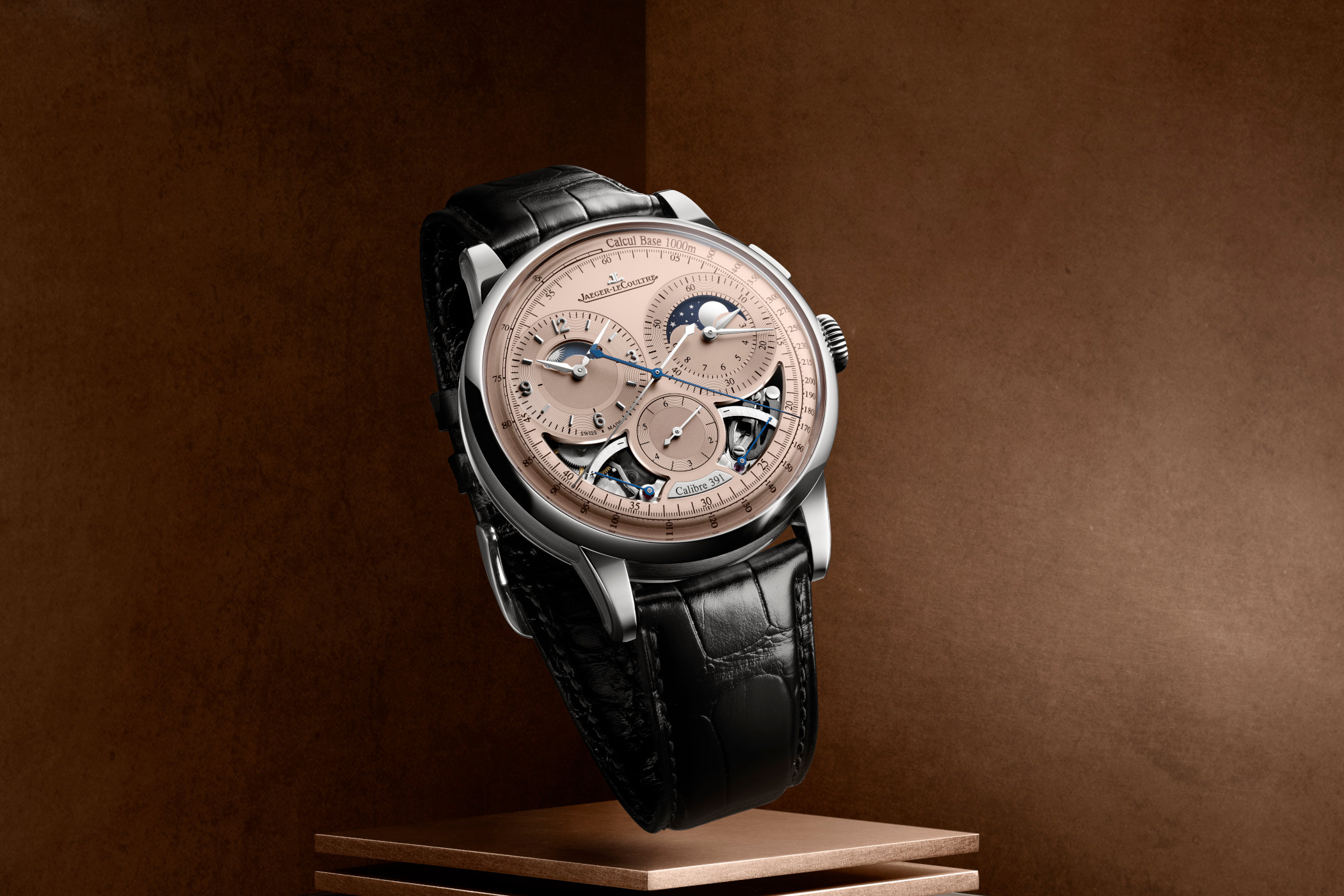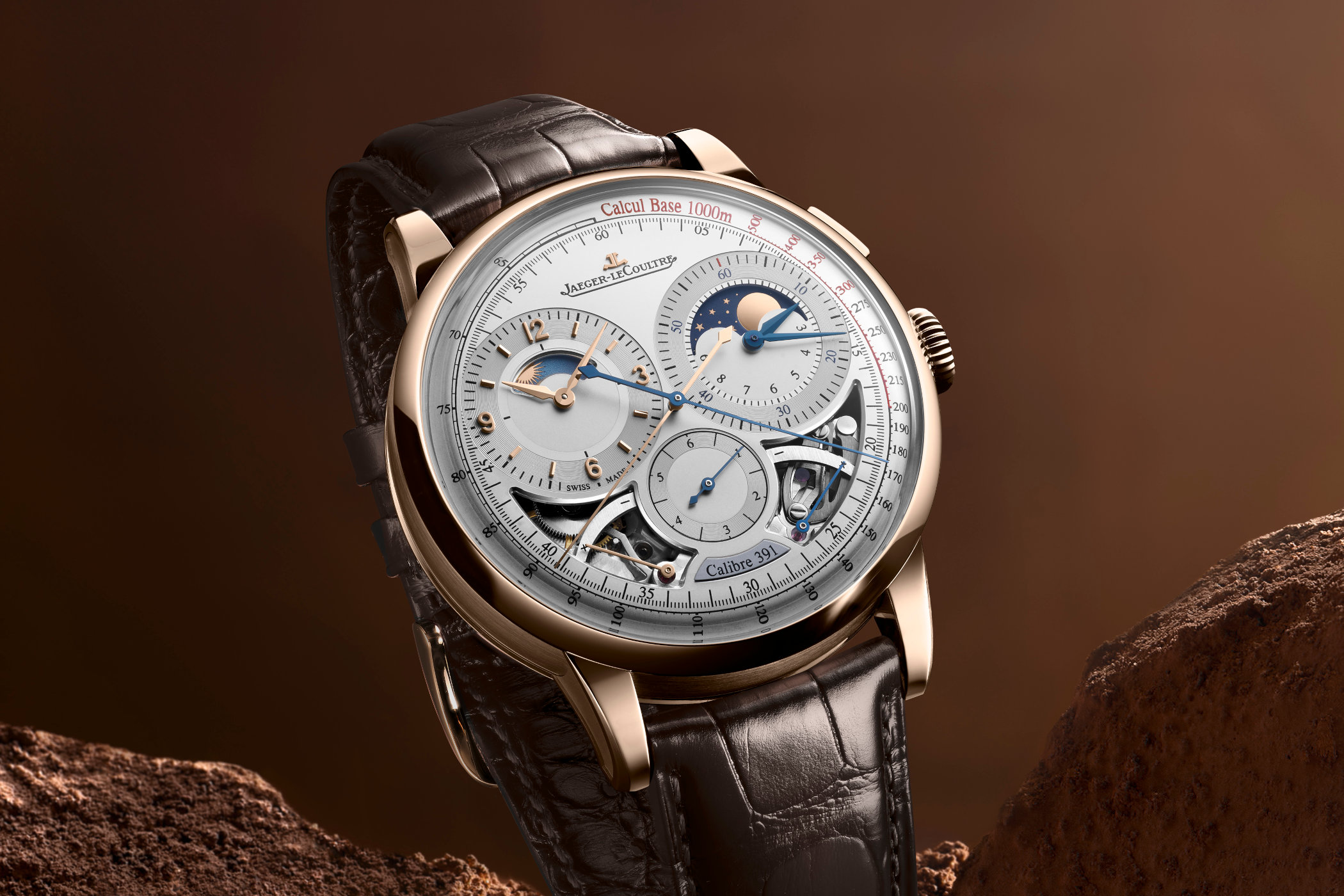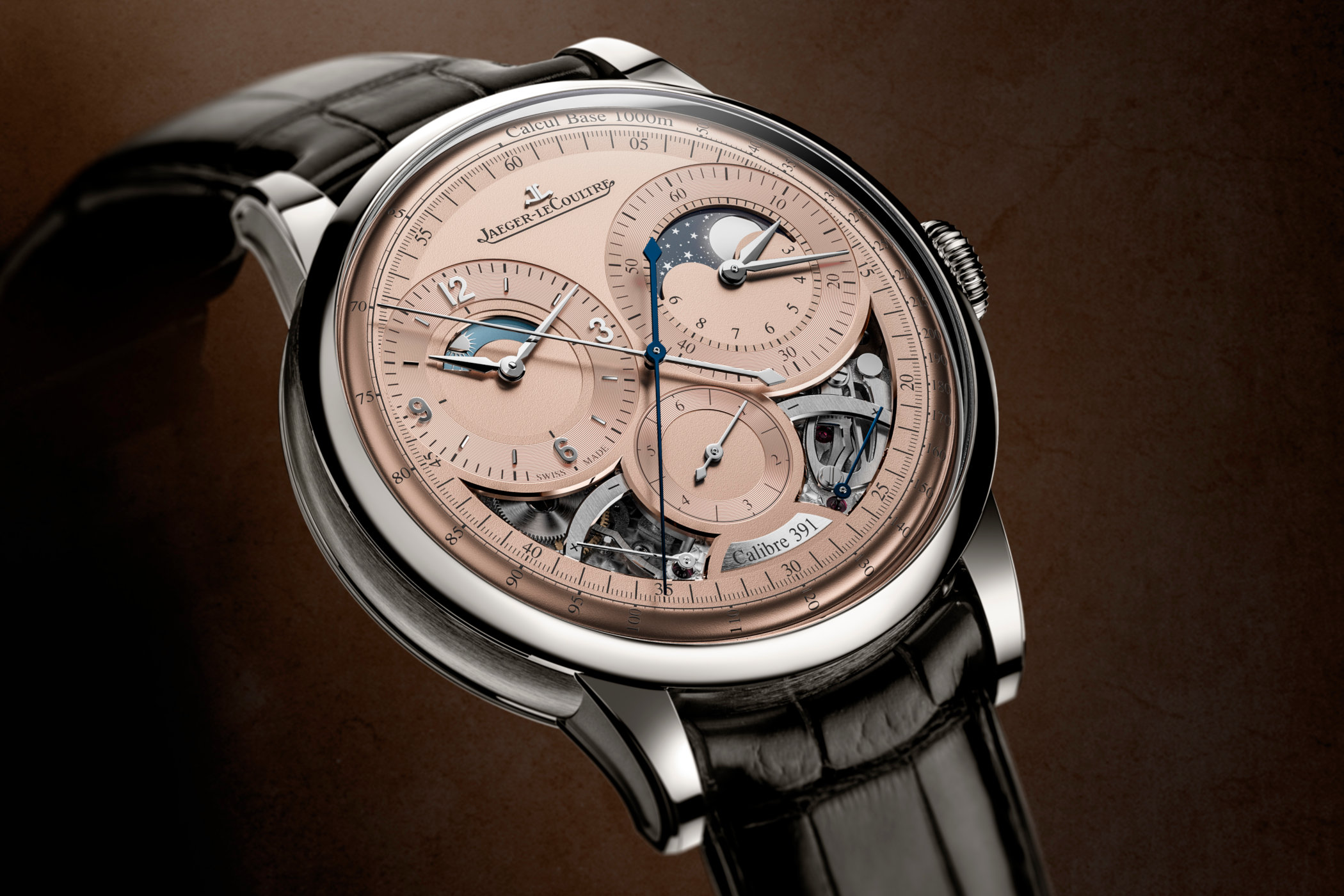The Return of the Duometre, with the new Jaeger-LeCoultre Duometre Chronograph Moon
A new in-house calibre, case and dial welcome the return of the Duometre, now combining chronograph and moon phases.

During the 2024 edition of Watches & Wonders, Jaeger-LeCoultre welcomes back the Duometre, one of its most technical, high-end collections. Thanks to the development of the new calibre 391, the Duometre Chronograph Moon combines a high-precision chronograph with a celestial complication. Further evolutions regarding the case and dial mark this model as one of the brand’s most important releases for 2024.
Jaeger-LeCoultre launched its groundbreaking Duometre mechanism in 2007. Determined to overcome the problem posed by complications that deplete the power reserve and jeopardise the escapement’s precision, JLC masterminded the Duometre or Dual-Wing system, a two-pronged solution composed of two independent mechanisms. Fitted with two separate barrels and two independent gear trains, one is tasked with driving the escapement and keeping the time functions, while the other powers the complications. With its two independent mechanisms united by a single regulating organ, the Duometre makes it possible to guarantee the movement’s isochronism despite the gas-guzzling complications.
The Dual-Wing system was first applied inside a chronograph in 2007, followed by models like the Duometre Quantième Lunaire, Travel Time, and Spherotroubillon Moon Phase. The homecoming party organised for the Duometre is celebrated with new case and dial designs. The new Duometre case of the Chronograph Moon is offered in platinum with a copper-coloured dial and in pink gold with a silver dial. A contemporary interpretation of classic savonette (soap) style pocket watches created by the brand in the 19th century, the round 42.5mm case has a thickness of 14.2mm.
The rotund silhouette of the 34-part case, enhanced with a rounded bezel and convex crystal, is decorated with polished, brushed and micro-blasted surfaces. The highly polished lugs feature a recessed micro-blasted area and are screwed to enable the different finishings. The crown has also been redesigned with deep, rounded notches, and the sleek, single pusher for the chronograph is rectangular-shaped and polished. The signature three-counter layout of the chronograph functions on the dial is similar to the earlier version of the Duometre Chronograph, with a tachymetre scale on the periphery, a sub-dial at 9 o’clock for the classic hours and minutes, a second sub-dial at 3 o’clock for the chronograph hours and minutes, and a third, smaller sub-dial at 6 o’clock for the seconde foudrayante or jumping seconds display, accurate to 1/6th of a second. Two centrally positioned seconds hand are also used, one linked to the timekeeping part and the other, which can be stopped, linked to the chronograph.
When the chronograph is activated, the foudrayante hand whirls around the sub-dial, completing one rotation in one second and stopping dead in its tracks when the chronograph is stopped. This smaller sub-dial is flanked by two openworked ‘winged’ areas revealing parts of the movement, with two arc-shaped bridges revealing the 50-hour power reserve of each barrel and gear train. The name of the calibre is placed on a silver applique just below the 1/6th of a second counter.
Ingeniously integrated, the moon phases are tucked inside the chronograph sub-dial at 3 o’clock while the night & day indicator is housed in the counter at 9 o’clock. The three sub-dials are slightly recessed, and feature broad snailed rings, and the dial is slightly curved. The powdery texture of the dial and the interior of the sub-dials is the result of an opaline finish. Unlike other chronographs in the Duometre collection, the chronograph hands on the salmon dial version are picked out in a different colour, and all the hands on the sub-dials are silver. However, the two central seconds hands are distinguished by their colour. The blue hand corresponds to the chronograph seconds, while the other one marks the running seconds. The distinction between timekeeping and chronograph hands is, however, clearly visible on the silver dial model.
The new manual-winding Jaeger-LeCoultre calibre 391 combines technical sophistication with beautiful finishings. Built from the ground up, it is a fully integrated mono-pusher chronograph with moon phases, night and day indications, two power reserve indicators, and the flying 1/6th of a second display. The transparent caseback reveals the openworked bridges with their refined sunray Geneva stripes radiating from the centre of the regulating organ and a host of other high-end finishings. One important comment, however, the movement used to be made out of German silver in the past and is now classically done in rhodium-plated brass… Too bad.
The Jaeger-LeCoultre Duometre Chronograph Moon is presented on a hand-stitched alligator strap. The platinum edition with opaline copper coloured dial retails for EUR 97,000, and the pink gold with silver coloured opaline dial model for EUR 79,000.
For more information, please consult jaeger-lecoultre.com.















1 response
It has the smile of a Konstantin Chaykin watch